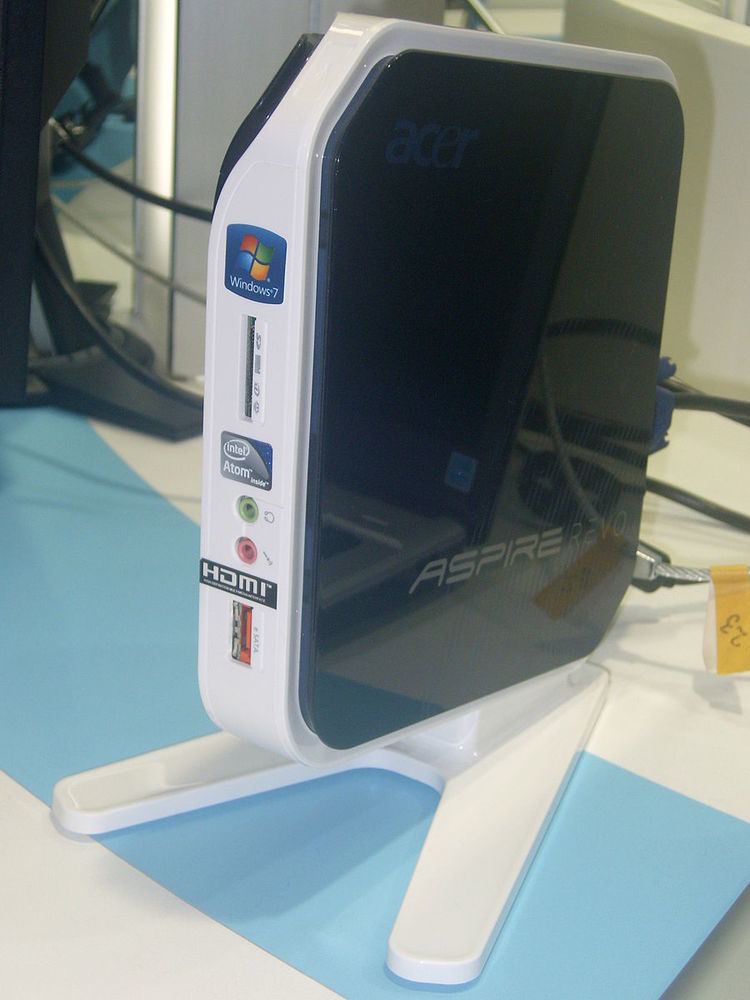 | ||
A nettop (or miniature PC, Mini PC or Smart Micro PC) is a small-sized, inexpensive, low-power, legacy-free desktop computer designed for basic tasks such as Internet surfing, accessing web-based applications, document processing, and audio/video playback. The word nettop is a portmanteau of Internet and desktop.
Contents
Compared to ordinary desktop computers, nettops are not only smaller and cheaper, but they also consume much less power. For example, CompuLab's fit-PC2 consumes no more than 8 watts of power whereas a typical desktop would easily consume more than 100 watts of power; consequently, nettops require significantly less cooling and may even be completely fanless. Some do not have an optical disk drive and use a solid state disk, making them completely silent. The tradeoff is that the hardware specifications and processing power are usually reduced and hence make nettops less appropriate for running complex or resource-intensive applications.
Hardware
There are three platforms that are primarily intended for nettops and netbooks:
Some nettops have also adopted system-on-a-chip designs. Although many major parts such as chipsets, video cards and storage devices can also be found on desktops, the CPUs that are put inside nettops are the fundamental component that differentiate them from normal desktops. The list below contains a range of hardware components that a typical nettop may be assembled from.
Intel's Atom processor has been adopted by several hardware manufacturers, such as ASUS, MSI, and Sony, for nettops. Nvidia has also released its first generation ION platform, which puts GeForce 9400M Motherboard GPU alongside the Atom processor to provide better high definition video playback ability and lower power consumption. In addition, Nvidia has announced that it will support VIA's CPUs this year. To further reduce the manufacturing cost and improve power efficiency, many manufacturers and start-up companies have chosen to use CPUs that were originally targeted at embedded computing devices such as AMD's Geode and ARM Cortex-based CPUs.
Operating systems
Many net-top models are x86-processor-based and as such are capable of running standard PC OSs. There are also operating systems designed specifically for nettops and other machines in the same performance class. Linux distribution supporting nettops is Ubuntu; previously supported Ubuntu Netbook Edition, Moblin, and Joli OS. Some high-end nettops and upcoming models are capable of running Windows Vista and Windows 7. Linux has also been adopted by nettop manufacturers as it costs little to no money to install and supports a wide range of CPU architectures. Google's Android Linux distribution is another option. Although Google's Android was originally designed for smartphones, it has also taken a seat in the nettop market.
Market
Nettops fall into Intel's category of "Basic PC", which usually cost from $100 to $299. Intel describes nettops as a large potential market. Nettops can serve as an affordable first computer for people in developing countries, or as an environmentally friendly choice as a secondary computer for people in developed countries.
